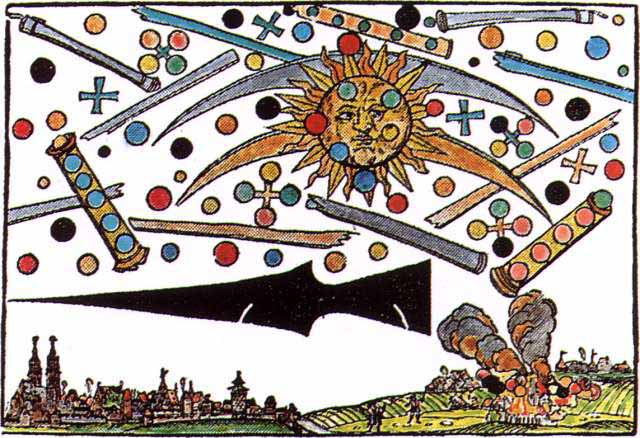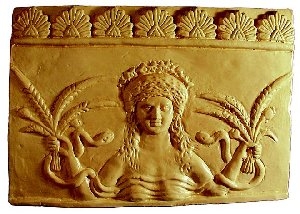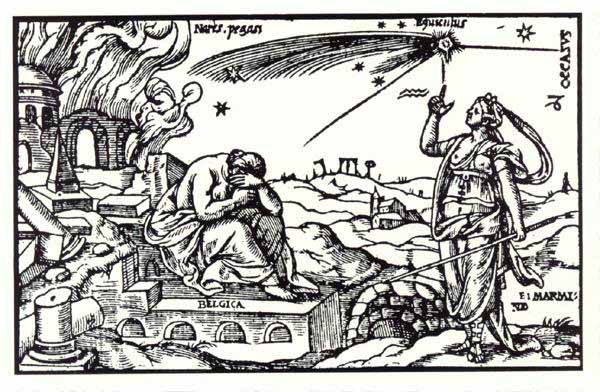Tim Callahan was kind enough to send me a pdf of his new ‘zine, CrawlJammer. It’s Space & Sorcery for Dungeon Crawl Classics.
I haven’t read DCC and this ‘zine may contain mechanical elegances that I’m missing out on, but I can recommend this just for the inspiring setting.
Tim’s approach to space is admirably divorced from science and complexity. Of course you can breathe in space, although the air is a bit thinner. Of course you can walk the deck of your planet-roving Viking longship—it establishes its own gravity well. Battle between ships uses the same mechanics as battles between characters. There are a few optional rules if you feel like tracking more stuff in order to create a spacier flavor.
It takes place in a solar system much like the one gamers of a certain age grew up with: nine planets, including Pluto. And, obviously, they’re all inhabited. Is there anything greater than tales set in the fully-inhabitable Solar System? I’ll never forgive Science for not revealing dinosaur-laden swamps beneath the clouds of Venus.
{{Incidentally, I’m working on a comic right now that involves a trek to all the planets, although it’s a different flavor of genre mash-up. Expect me to flog the hell out of it when it debuts.}}
CrawlJammer has my inspiration-glands all fired up. The Odyssey-inspired island-a-week B/X campaign I’d been noodling is suddenly looking more planetoid-a-week.
Some thoughts on developing the setting past the default Solar System of our childhood: There’s some wonderful stuff from both older historical and contemporary models of the Solar System that feed right into a setting where our planet is spelled “Aereth.”
Ceres: For about half of the 19th Century, Ceres was considered the fourth planet. Then it was demoted to “Asteroid” (but what an asteroid! Ceres accounts for a third of the asteroid belt’s mass), and was then promoted to Dwarf Planet. Situated between Mars and Jupiter; named after the Goddess of Agriculture; seems ripe for setting development.
Eris and Orcus: GUYS! There are bodies in our Solar System named Eris and Orcus! The International Astronomical Union is begging us to use them in a setting like this! Eris is already designated a dwarf planet, and Orcus probably will be, whenever the IAU gets around to it.
The Asteroid Belt, the Kuiper Belt, the Oort Cloud, etc.: I’d probably name these “Archipelagoes” or something, and consider them the Unmapped Wilderness of the setting: an endless slate of discrete locations where you can drop any scenario you feel like. A great place to use randomization like the “What Makes This Planet Different?” table from this issue. A great place for discordant ideas. Want to have a society of adorable pigs, or sentient colors, or cosmic beatniks without upsetting the rest of your setting? Stick ‘em on a planetoid in one of the Archipelagoes.
Fixed Stars and Wandering Planets: Not sure which ones, but I’d include a few myth-heavy stars as locations within the Solar System. They would stay in one place, unlike the Planets. I want people to be able to get lost while travelling, so Planets would live up to their name and really wander around. It would take a highly-specialized retainer to accurately predict where a planet is going to be at a given moment.
Comets: These would be places of The Highest Weirdness. Comets jumble up the laws of physics and magic and philosophy in unsettling ways for as long as their influence is felt.
Other Solar Systems: Don’t expect to travel that far, but one might meet up visitors from afar. I’d put on my Gene Wolfe hat, here. Interstellar aliens would absolutely be called “Cacogens.”
All of which is my roundabout way of saying “Pick up a copy of CrawlJammer, why don’t you?”
I haven’t read DCC and this ‘zine may contain mechanical elegances that I’m missing out on, but I can recommend this just for the inspiring setting.
Tim’s approach to space is admirably divorced from science and complexity. Of course you can breathe in space, although the air is a bit thinner. Of course you can walk the deck of your planet-roving Viking longship—it establishes its own gravity well. Battle between ships uses the same mechanics as battles between characters. There are a few optional rules if you feel like tracking more stuff in order to create a spacier flavor.
It takes place in a solar system much like the one gamers of a certain age grew up with: nine planets, including Pluto. And, obviously, they’re all inhabited. Is there anything greater than tales set in the fully-inhabitable Solar System? I’ll never forgive Science for not revealing dinosaur-laden swamps beneath the clouds of Venus.
{{Incidentally, I’m working on a comic right now that involves a trek to all the planets, although it’s a different flavor of genre mash-up. Expect me to flog the hell out of it when it debuts.}}
 |
| Space is weird. |
Some thoughts on developing the setting past the default Solar System of our childhood: There’s some wonderful stuff from both older historical and contemporary models of the Solar System that feed right into a setting where our planet is spelled “Aereth.”
 | |
| Ceres, She Who Brings Forth |
Eris and Orcus: GUYS! There are bodies in our Solar System named Eris and Orcus! The International Astronomical Union is begging us to use them in a setting like this! Eris is already designated a dwarf planet, and Orcus probably will be, whenever the IAU gets around to it.
 | |
| Orcus, Punisher of Broken Oaths |
The Asteroid Belt, the Kuiper Belt, the Oort Cloud, etc.: I’d probably name these “Archipelagoes” or something, and consider them the Unmapped Wilderness of the setting: an endless slate of discrete locations where you can drop any scenario you feel like. A great place to use randomization like the “What Makes This Planet Different?” table from this issue. A great place for discordant ideas. Want to have a society of adorable pigs, or sentient colors, or cosmic beatniks without upsetting the rest of your setting? Stick ‘em on a planetoid in one of the Archipelagoes.
Fixed Stars and Wandering Planets: Not sure which ones, but I’d include a few myth-heavy stars as locations within the Solar System. They would stay in one place, unlike the Planets. I want people to be able to get lost while travelling, so Planets would live up to their name and really wander around. It would take a highly-specialized retainer to accurately predict where a planet is going to be at a given moment.
 | |
| Dooooooooooooom Comet |
Other Solar Systems: Don’t expect to travel that far, but one might meet up visitors from afar. I’d put on my Gene Wolfe hat, here. Interstellar aliens would absolutely be called “Cacogens.”
All of which is my roundabout way of saying “Pick up a copy of CrawlJammer, why don’t you?”

Comments
Post a Comment